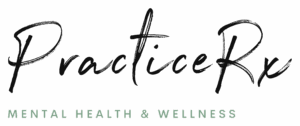You’ll discover:
-
What ketamine therapy is (and isn’t)
-
How it works in the brain for depression and anxiety
-
Why it’s not just a last-resort option anymore
-
Who it may help—and who it won’t
-
What to expect from a session
-
And how this fits into the broader conversation around psychedelic therapies


When most people hear the word ketamine, they still picture a dazed guy at Woodstock wandering barefoot through a field trying to order ice cream from a zebra. That old image has done a lot of damage to the public’s perception of what’s actually a legitimate, evidence-based medical treatment.
In reality, ketamine therapy has quietly become one of the most promising options for people who have battled depression, anxiety, or trauma and haven’t found relief through traditional medications.
I’ve seen this up close in practice. I’ve also seen the skepticism, the raised eyebrows, and the fear that trying something like this means you’ve “run out of options.” It doesn’t. It just means you’re finally looking at a different part of the brain that the older medications never reached.
What Ketamine Therapy Really Is
Ketamine has been around for decades as a surgical anesthetic. What’s changed is how we use it and at what dose. When administered in small, precisely controlled amounts, it appears to create a short window where the brain becomes more adaptable. That window allows you to break out of patterns of thought that have been looping for years.
It’s given most often by IV or intramuscular injection in a calm, monitored medical environment. This isn’t a take-home drug (even though it’s being marketed this way by national telehealth companies) or something you casually try at home. Sessions are structured, guided by a therapist, and always followed by integration discussions to help connect what comes up during the experience with what needs to change in daily life.
How It Works in the Brain
Traditional antidepressants like SSRIs work by adjusting serotonin levels, slowly nudging brain chemistry toward balance. Ketamine works on glutamate, a completely different system. It blocks NMDA receptors and boosts the release of BDNF, a protein that helps neurons grow and connect.
In simpler terms, ketamine works by increasing neurotransmitters and helping the brain rebuild the connections that depression has damaged. That’s why so many people feel results within days instead of weeks.
I’ve seen patients who hadn’t felt anything for years finally describe a sense of calm or lightness they didn’t think was possible anymore.
Who Might Benefit from Ketamine
Not everyone is the right candidate. When I evaluate someone for ketamine therapy, here’s what I’m looking for:
-
Persistent depression or anxiety that hasn’t responded to medications
-
High stress or trauma history that keeps replaying emotionally
-
Burnout or emotional flatness, even when “everything looks fine” on paper
-
A willingness to participate in integration or therapy afterward
It’s not right for people with untreated psychosis or active substance dependence, and it’s not meant as a quick escape. It’s a medical tool that works best when used with intention and follow-through.
What to Expect from a Session
During a session, patients relax in a low-stimulus room with heart rate and vitals monitored. The medication is infused slowly over about 40 minutes. The experience can range from calm and introspective to deeply emotional, depending on the individual. Most describe it as stepping outside of their usual thought patterns and finally being able to see things clearly.
Afterward, integration sessions help process insights and emotions that surfaced during treatment. This part is where lasting change happens. We remind patients not to chase the “feeling” of ketamine; but more to use that new mental flexibility to rebuild.

The Bigger Picture: Psychedelics and the Future of Psychiatry
We’re entering a new era of mental health treatment, and ketamine is the first door opening that path. Psychedelic-assisted therapies like psilocybin and MDMA are next in line for federal approval, and when that happens, we’ll have even more tools to work with.
The stigma around psychedelics still lingers, but that’s slowly changing as more people understand the science. These aren’t party drugs, but molecules that interact with some of the deepest emotional and neurological systems in the body. Used correctly, they can help rewire trauma, improve emotional regulation, and restore a sense of meaning and connection.
Ketamine just happened to get there first.
Have a Question?
Final Thoughts by Dr. Clay Hall, NP- PracticeRx

Ketamine isn’t a magic bullet. It’s not the answer for everyone. But for the right person, in the right setting, it can change everything.
I’ve seen people go from barely hanging on to finally getting their lives back. I’ve seen parents reconnect with their kids, couples reconnect with each other, and individuals who were convinced they were broken start to feel whole again.
If you’re curious, or if traditional treatments haven’t worked for you, it might be time to explore whether this is an option worth considering.
No rainbows. No unicorns. Just real people finding a new way to heal.
If you have questions, or would like to discuss this further, please book a free consultation.
Feel Good. Live Better.
–Clay



